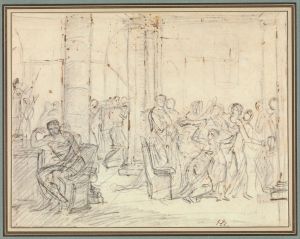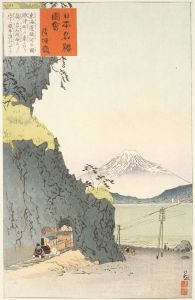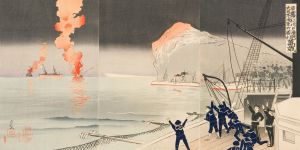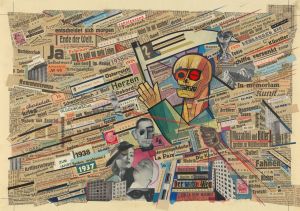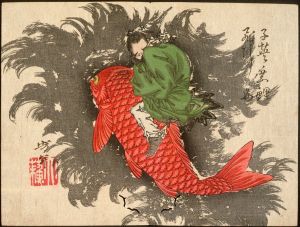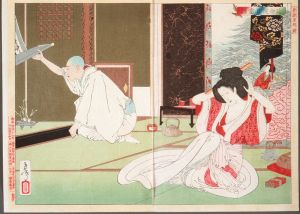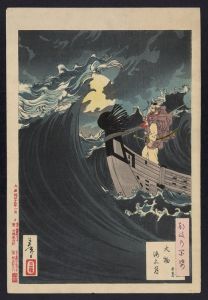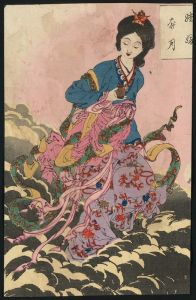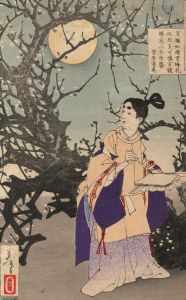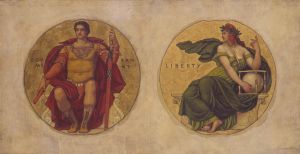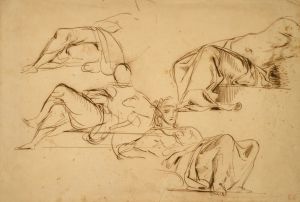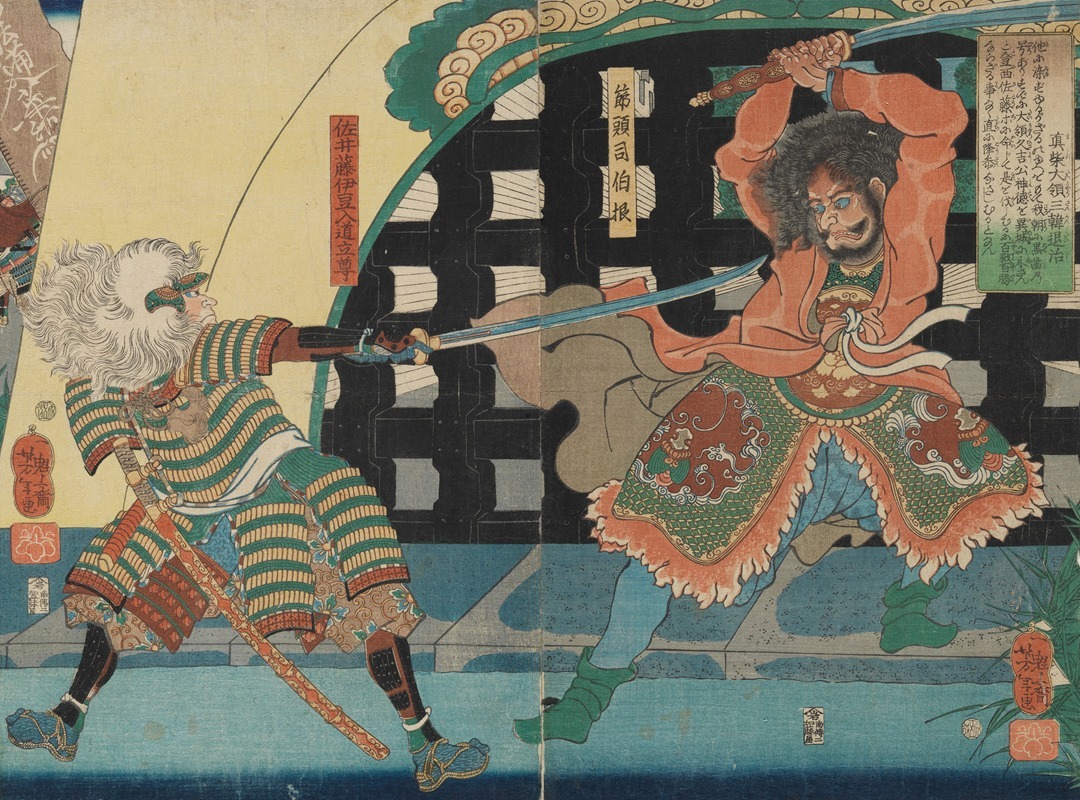
Lord Mashiba Subjugates Korea
A hand-painted replica of Tsukioka Yoshitoshi’s masterpiece Lord Mashiba Subjugates Korea, meticulously crafted by professional artists to capture the true essence of the original. Each piece is created with museum-quality canvas and rare mineral pigments, carefully painted by experienced artists with delicate brushstrokes and rich, layered colors to perfectly recreate the texture of the original artwork. Unlike machine-printed reproductions, this hand-painted version brings the painting to life, infused with the artist’s emotions and skill in every stroke. Whether for personal collection or home decoration, it instantly elevates the artistic atmosphere of any space.
"Lord Mashiba Subjugates Korea" is a woodblock print created by the renowned Japanese artist Tsukioka Yoshitoshi. Yoshitoshi, who lived from 1839 to 1892, is celebrated for his innovative and dynamic approach to the traditional art form of ukiyo-e, which flourished during the Edo period in Japan. His works often depicted historical scenes, kabuki actors, beautiful women, and supernatural themes, reflecting both the cultural heritage and the changing times of the Meiji era.
This particular print is part of Yoshitoshi's series "A New Selection of Eastern Brocade Pictures" (Shinsen Azuma Nishiki-e), which was produced in the late 19th century. The series is known for its vivid colors and dramatic compositions, showcasing Yoshitoshi's mastery in capturing the essence of historical and legendary figures.
The artwork depicts a scene from the Japanese invasions of Korea (1592–1598), specifically focusing on the figure of Lord Mashiba, a reference to Toyotomi Hideyoshi's general, Kato Kiyomasa. Kato Kiyomasa was one of the prominent samurai commanders during the invasions, known for his military prowess and strict adherence to the samurai code. The print illustrates a moment of triumph and authority, capturing the tension and drama of the historical event.
Yoshitoshi's portrayal of Lord Mashiba is characterized by bold lines and a dynamic composition, emphasizing the power and determination of the samurai. The use of vibrant colors and intricate details reflects the influence of Western art techniques that were becoming more prevalent in Japan during the Meiji Restoration, a period of rapid modernization and cultural exchange.
The historical context of the Japanese invasions of Korea adds depth to the artwork. These invasions, initiated by Toyotomi Hideyoshi, aimed to conquer the Korean Peninsula and eventually China. Although initially successful, the campaigns ultimately failed due to strong Korean resistance, logistical challenges, and the eventual death of Hideyoshi. The invasions had significant impacts on Korea, Japan, and China, shaping the political and cultural landscapes of East Asia.
Yoshitoshi's work not only serves as a historical record but also as a reflection of the Meiji era's fascination with Japan's feudal past. During this time, there was a resurgence of interest in samurai culture and historical narratives, as Japan sought to redefine its national identity amidst Western influence and internal reforms.
"Lord Mashiba Subjugates Korea" exemplifies Yoshitoshi's ability to blend traditional Japanese art with contemporary themes and techniques. His prints remain highly regarded for their artistic quality and historical significance, offering insights into the complexities of Japan's cultural evolution during the late 19th century. Through his work, Yoshitoshi has left a lasting legacy, influencing both his contemporaries and future generations of artists.





